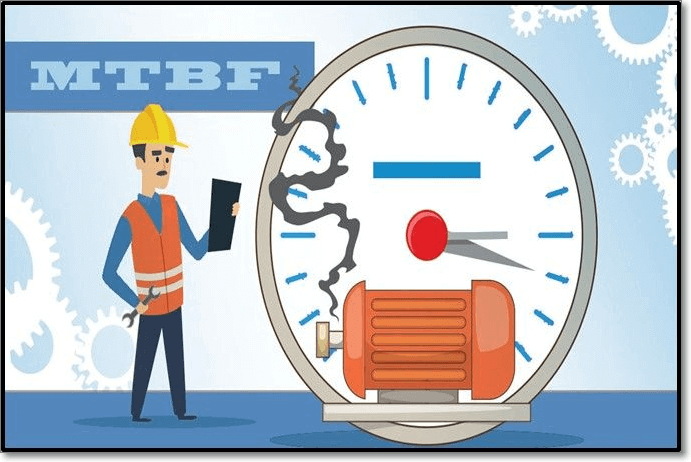What Is MTBF? Mean Time Between Failures Explained
What is MTBF?
MTBF, or mean time between failures, is a maintenance metric that predicts the time between failures of a technology or a mechanical component. The metric is a crucial maintenance indicator that professionals worldwide are using.
MTBF tracks two key factors:
- Availability of a Product
- Reliability of a Product
The reliability of a product correlates with the time between failures- if the time is high, it means your product is reliable.
The companies strive to keep MTBF as high as possible. The goal is to take up to thousands or millions of MTBF hours.

MTBF vs MTTF
MTBF and MTTF are two terms that are often misunderstood. Forget beginners; even experts struggle to differentiate between the two. Here, we will try to convey their true meanings.
MTTF stands for mean time to failure. The term describes the average lifespan of any device. The idea is to add up the lifespan of all devices and divide it by the number of devices to find the average life span.
For Example: if you have 3 hard disks, which work well for 5, 5.5, and 6 years. Their avg life span would be:
( 5+5.5+6/3)= 5.5 years
It implies that you should plan to replace the hard drives within 5.5 years.
The critical difference between MTBF and MTTF lies in how these issues are resolved. In MTBF, the defective part is repaired, while in MTTF, the defective component must be replaced.
All hardware failures fall under MTTF. Because in most cases, the remedy is to replace the concerned part. In comparison, software issues required MTBF solutions. Hence, you can't possibly interchange both terms.
How to Calculate MTBF?
To determine MTBF, calculate the total number of operational hours of equipment in any selected period and divide it by the failures in between.
MTBF Number = (Total OperationaL Hours ) ⁄ (Number of Failures)
For Example, if a gasoline engine has been operational for 7,000 hours in a year. During this period, it has experienced 12 failures. The MTBF of that engine would be:
MTBF Number = (7000 ) / 12 = 583.33 Hours
To get real-time results, it is advisable to get data from the actual performance of the equipment. The performance of every machine varies depending upon operation, maintenance, site considerations, and skilled labor. It isn't advisable to calculate MTBF by taking readings from theoretical manuals alone.
How to Use MTBF?
MTBF provides the period for likelihood failure of. Using this number, you can anticipate all possible flaws of operational equipment.
After knowing that, the key is to analyze the root cause and preventive maintenance before these failures. These activities can increase MTBF numbers, making your equipment more reliable.
MTBF and aided metrics such as MTTR help avoid bottlenecks, machine failures, and operational breakdowns. This data analytics enables you to deal with the issues before they get out of control.
If a failure occurs, the team is always ready to tackle and resolve it.
Bottom Line
We live in a data-driven world. The MTBF data makes your operations more reliable by keeping the equipment in the best condition.
Failures at the commercial level accompany the loss of fortune, reputation, and life. To avoid that, we recommend every industry use MTBF to stay ahead of the curve.
In this article, we have introduced MTBF, its calculation method, and its possible uses. Do give it a read and let us know how your thoughts on it.
Related Articles
- Working With Thumb Drive& Get the Difference Between It and a Flash Drive
- What Is PowerShell ISE? [Updated 2022]
- Complete Guide of SATA Cable[Definition, Types, Usage & Differences]
- What Is a File Server? Definition and How It Works.